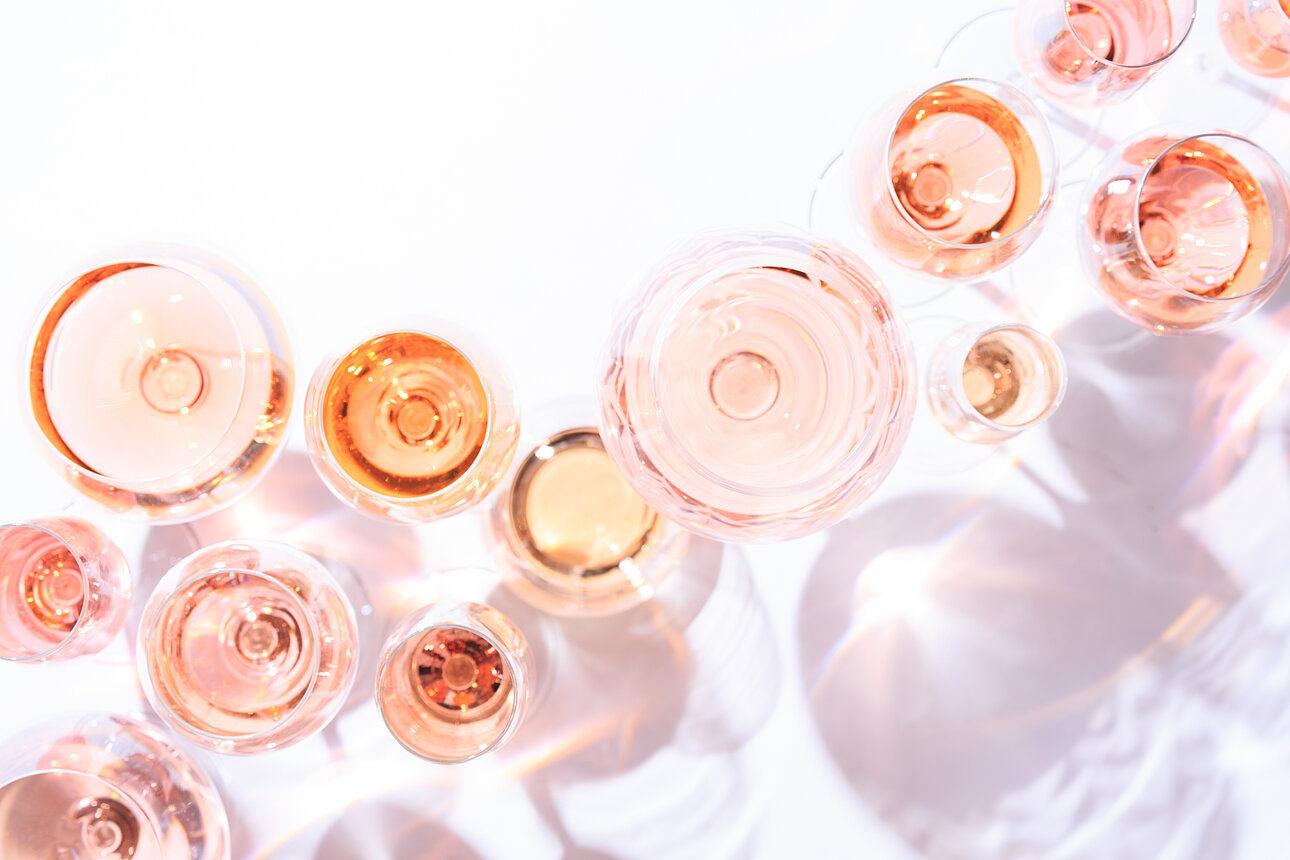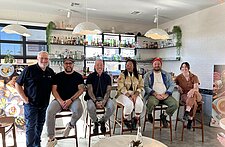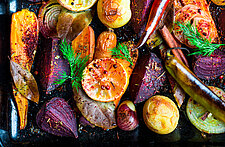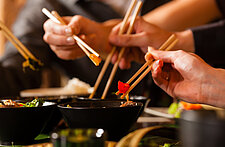Rosé all day. Need we say more? If you’re behind on the blossoming trend of rosé wine, don’t worry, you’re not too late. Growing in popularity as a summertime favorite, rosé has won our hearts and evolved into a year-round classic.
The B.R. (Before Rosé) Era
 For centuries rosé has been a cultural staple within Provence, France, which continues to drive rosé production for the world. Chateau d'Esclans, a Provence winery, inspired the international rosé phenomenon with their most well-known brand, Whispering Angel Rosé. Paul Chevalier, National Fine Wine Director who oversees Château d’Esclans and Whispering Angel in the United States, recalls a time before rosé made a name for itself in the U.S. “It was not trendy, especially in America, rosé had a bad reputation. There was a tiny pocket of people who drank rosé in the Hamptons and Nantucket, and the reason why is because those people had probably visited France and had been to Provence.”
For centuries rosé has been a cultural staple within Provence, France, which continues to drive rosé production for the world. Chateau d'Esclans, a Provence winery, inspired the international rosé phenomenon with their most well-known brand, Whispering Angel Rosé. Paul Chevalier, National Fine Wine Director who oversees Château d’Esclans and Whispering Angel in the United States, recalls a time before rosé made a name for itself in the U.S. “It was not trendy, especially in America, rosé had a bad reputation. There was a tiny pocket of people who drank rosé in the Hamptons and Nantucket, and the reason why is because those people had probably visited France and had been to Provence.”
Receive Top Food & Beverage Trends To Your Inbox!
With a strong passion for rosé and the urge to share it with the world, Chateau d'Esclans began to market Whispering Angel in America. A little over a decade ago, the brand started popping up at relevant wine festivals and trendy millennial hot spots in New York City, Los Angeles, the Hamptons, Nantucket, and Miami with Chevalier at the forefront of this effort.
“We were careful about where we went to market. We started partnerships with SoHo House in New York, Chateau Marmont in Los Angeles, the Beverly Hills Hotel, and the Fontainebleau in Miami. These were all places millennials would go, so we didn’t do any advertising, only word of mouth.” Chevalier shares in a Vinepair article.
#RoséAllDay
There’s nothing not to like about the millennial pink hue of a rosé, glass or bottle, it eludes a lifestyle of leisure and luxury. Symrise research increasingly points to the power of Instagrammable food and beverage and rosé is a prime example of this power.
With millennials as the rosé target market, the blush bottles were placed at the trendy spots that millennials were going to. The millennial market was also targeted at price point, with rosé offered as a cheaper alternative to its luxurious cousin, champagne. A nice bottle can be purchased within the range of $20 and $30.
According to Statista, 61% of Instagram users are between 18 and 34 years old, making it an important platform to market rosé brands. With millennials at the forefront of social media, it didn’t take long for Instagram to spiral into a rosé craze.
 Using hashtags like #roséallday and #yeswayrosé, thousands of people started sharing pictures of their rosé—from beachside to boats or lavish table spreads—anywhere that fit the relaxed and carefree lifestyle that rosé boasts. With Instagram providing a channel for crowd sourced advertising, brands evolved to better suit the social media aesthetic. Rosé labels went from romantic, French influenced design to minimal, bold and typographically forward (cans included).
Using hashtags like #roséallday and #yeswayrosé, thousands of people started sharing pictures of their rosé—from beachside to boats or lavish table spreads—anywhere that fit the relaxed and carefree lifestyle that rosé boasts. With Instagram providing a channel for crowd sourced advertising, brands evolved to better suit the social media aesthetic. Rosé labels went from romantic, French influenced design to minimal, bold and typographically forward (cans included).
Rosé on the Risé
According to Nielsen, rosé only occupies 1.5% of the total wine category but it’s growing at an unprecedented rate. In an interview with Forbes, Paul Chevalier, sheds his expertise on the rising trend. “The rosé category has a strong future ahead. What we are seeing now is that rosé consumption is starting to spread across all 50 states (specifically middle America).”
Thrillist reports that in 2013, Americans consumed 279.4 million liters of rosé making it the 2nd largest rosé consumer behind France at #1. Over the past few years that number has continued to grow with sales of dry rosé increasing by 125%. According to Technomic, rosé is the fastest growing alcoholic drink on U.S. restaurant menus. With 34% growth, rosé is closely followed by Moscow Mules at 23% and Scotch Whiskey at 4%.
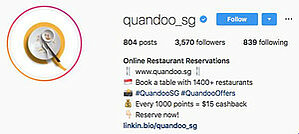 Beverage Daily
Beverage Daily
Beyond The Bottle
In its undeniable popularity among millennials, rosé has made its way into other product categories (as most viral trends do). Starting closest to its original state, freeze and blend rosé and you have a newer summer favorite: frosé.
Beyond vino, Mintel reports on millennial pink’s movement across the alcoholic beverage category:
- - Tequila brand Codigo 1530 has released Codigo Rosa, featuring the rose color from Napa Cabernet barrels, giving off a slight floral aroma from the wine.
- - Taking a more craft approach, Portland, Oregon’s craft brewery and distillery Rogue has created Rogue Pink Spruce Gin, gin aged in Oregon Pinot Noir barrels for several months, featuring flavor notes of fruit and spruce.
- - Barefoot released a Rosé Spritzer, a light and fizzy canned rosé with hints of raspberries and red cherries
Moving into the food category, the United States has seen everything from rosé inspired gummies to bonbons:
- - Project 7 Champagne Dreams Brut & Rosé Gourmet Gummies are made with organic sweeteners and are 90% organic.
- - Sugarfina Rosé All Day Chocolate Bar is described as a pale pink chocolate from Paris that is topped with baby rosé bears.
- - Vosges Rosé Pairing Bonbons are French rosé-filled cocoa butter rich white chocolate bonbons that are crafted to pair with a chilled rosé wine.
Alongside a slew of rosé merch (shirts, bags, candles, etc.) celebratory festivals have been established in the name of rosé. La Nuit En Rosé, a NYC yacht cruise with over 100 rosé wines & Pinknic, a rosé picnic & music festival on NYC’s Governors Island both celebrate the beloved drink with sold out attendance.
Even music streaming app, Spotify, is getting in on the trend. The brand shared on Instagram that in the last month (July to August 2018) New Yorkers streamed over 425 unique playlists about rosé (a selection that’s most popular on Thursdays around happy hour).
Rosé Ahead
If we’re drinking rosé all day, why stop there? Rosé gained its reputation as a summertime drink with its flirty color and strong association with leisurely activities (that are typically enjoyed in the summer). However rosé is a versatile drink that can be enjoyed all year round – if you’re enjoying white and red wine in the winter, why not rosé? With growing demand, rosés are transitioning from seasonal menus to year-round offerings, a big feat for millennials.
Rosé, in its many proven forms, has a bright future ahead. As your trusted flavor partner, Symrise is happy to explore rosé solutions for your next project. Reach out to our team to learn more!
Stay In Tune With Industry Trends, Subscribe to Insight's Weekly Newsletter!
